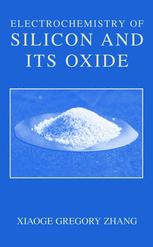

Most ebook files are in PDF format, so you can easily read them using various software such as Foxit Reader or directly on the Google Chrome browser.
Some ebook files are released by publishers in other formats such as .awz, .mobi, .epub, .fb2, etc. You may need to install specific software to read these formats on mobile/PC, such as Calibre.
Please read the tutorial at this link: https://ebookbell.com/faq
We offer FREE conversion to the popular formats you request; however, this may take some time. Therefore, right after payment, please email us, and we will try to provide the service as quickly as possible.
For some exceptional file formats or broken links (if any), please refrain from opening any disputes. Instead, email us first, and we will try to assist within a maximum of 6 hours.
EbookBell Team

4.1
90 reviewsIt may be argued that silicon, carbon, hydrogen, oxygen, and iron are among the most important elements on our planet, because of their involvement in geological, biol- ical, and technological processes and phenomena. All of these elements have been studied exhaustively, and voluminous material is available on their properties. Included in this material are numerous accounts of their electrochemical properties, ranging from reviews to extensive monographs to encyclopedic discourses. This is certainly true for C, H, O, and Fe, but it is true to a much lesser extent for Si, except for the specific topic of semiconductor electrochemistry. Indeed, given the importance of the elect- chemical processing of silicon and the use of silicon in electrochemical devices (e. g. , sensors and photoelectrochemical cells), the lack of a comprehensive account of the electrochemistry of silicon in aqueous solution at the fundamental level is surprising and somewhat troubling. It is troubling in the sense that the non-photoelectrochemistry of silicon seems “to have fallen through the cracks,” with the result that some of the electrochemical properties of this element are not as well known as might be warranted by its importance in a modern technological society. Dr. Zhang’s book, Electrochemical Properties of Silicon and Its Oxide, will go a long way toward addressing this shortcoming. As with his earlier book on the elect- chemistry of zinc, the present book provides a comprehensive account of the elect- chemistry of silicon in aqueous solution.